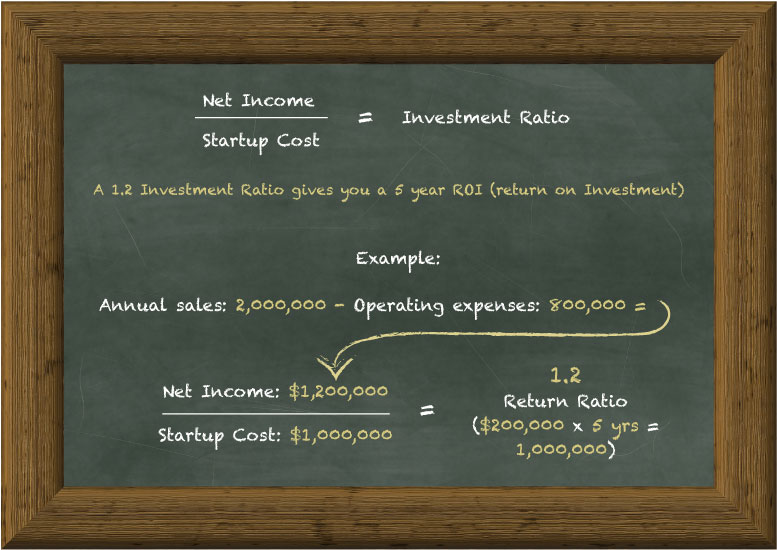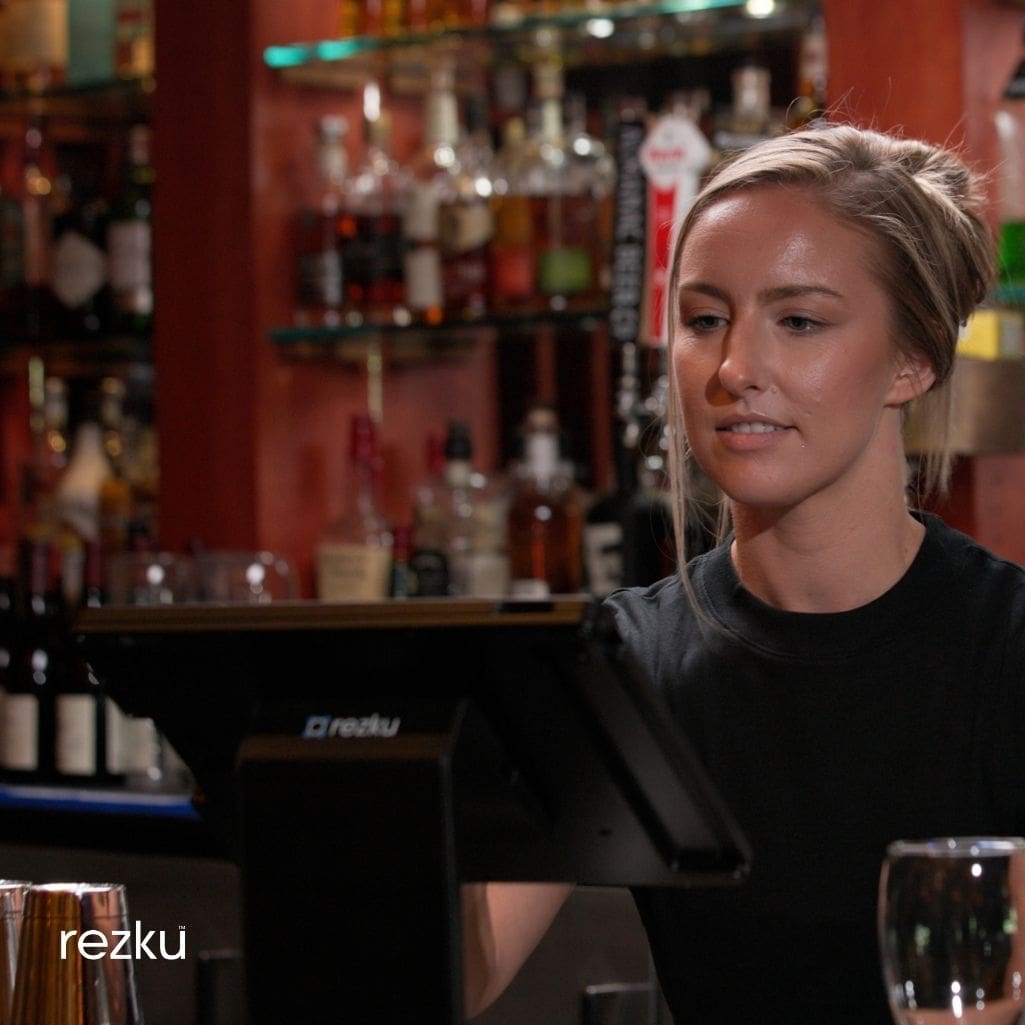How Much Will It Cost? A Restaurant Startup's Guide to Estimating Initial Costs and Getting to ROI
The Rezku Team

If you want to open a restaurant you need to figure out how much it’s going to cost. And if you are working on your business plan or want to entertain investors, you need to calculate the estimated return on investment (ROI).
In this guide we will tackle both subjects: How to estimate your restaurant’s initial startup capital needs and how long it will take for that investment to break-even.
Accurately Estimating Startup Costs: The Foundation of Your Restaurant’s Success
Opening a restaurant is a dream for many entrepreneurs, but turning that dream into reality requires careful planning and a solid financial foundation. One of the most critical steps in this journey is accurately estimating your startup costs. These costs span a wide range of expenses, from securing a location to equipping your kitchen with necessities.
Insufficient cash will scuttle your restaurant plans before the doors ever open. Not securing adequate funding is like starting a race with half a tank of gas. It’s impossible to make it to the finish line.
So, let’s dive into where the money for startup will go, point-by-point.
Securing Your Restaurant’s Location
The first major expense you’ll encounter is the cost of securing a suitable location for your restaurant. This includes not only the rent or lease payment but also any necessary renovations or buildout costs.
Depending on the condition of the space you’ve chosen, these renovation costs can vary significantly. You may need to factor in expenses for structural changes, plumbing and electrical work, and aesthetic upgrades to create the desired ambiance for your concept.
Licenses, Permits, and Professional Fees
Operating a restaurant comes with a host of local and state legal requirements. Including obtaining the necessary licenses and permits. These can range from building permits, health department permits and liquor licenses to business licenses and more.
Additionally, you will likely need to engage the help of professionals such as lawyers, accountants, and consultants to ensure compliance and provide valuable guidance – this is not an area to skimp if it’s your first restaurant opening!
Outfitting Your Kitchen and Dining Room
Once you’ve secured your location, you’ll need to invest in the interior. This includes all the necessary kitchen equipment as well as furniture, flooring and lighting to bring your restaurant to life. * Commercial kitchen appliances like walk-in freezer, dish-washer and ranges * Cooking and prep equipment including knives and frying pans * Plates, flatware, tablecloths, etc. * Dining room furniture and decor * Bar, bar equipment, keg taps and refrigeration
Don’t forget to account for additional specialized equipment your specific concept may require like dough mixers.
Marketing and Branding
In today’s competitive restaurant landscape, effective marketing and branding are essential for attracting customers from the start. Factor in the costs of marketing and branding to your startup costs.
- Designing and printing of menus
- Developing a logo, package design and branding
- Website design and hosting
- Food photography
- Outside signage
- Digital or traditional menu displays
- Initial marketing campaigns for print and online to generate buzz and establish your brand
Initial Inventory and Supplies
Before you can open your doors to customers, you’ll need to stock up on your initial inventory of food, beverages, to-go containers and other supplies. This upfront investment ensures you’re prepared to serve your guests from day one without running out of these essential items that are your primary source of income for the restaurant.
Your POS and Technology Stack
No restaurant can operate without a system for taking orders. Modern point of sales also operate as your primary source for data and reporting that will integrate with your bookkeeping system.
- Office computers and printers
- Inventory management software
- Employee payroll and time tracking
- Online ordering platform
- Point of sale terminals
- Accounting and bookkeeping software
If you want to avoid accounting nightmares, technology should not be an after-thought. These systems form the backbone of business intelligence and streamline operations.
Working Capital and Operating Cash
Lastly, don’t forget to account for sufficient working capital and operating cash. Even after your doors open, it may take some time before your restaurant becomes self-sustaining. During this initial period, you’ll need additional funds to cover ongoing expenses like payroll, utilities, and inventory replenishment.
Tips for Accurate Cost Estimation
Now that you understand the many components that contribute to restaurant startup costs, it’s essential to estimate these costs accurately.
Here are a few tips to help you:
-
Research and Get Quotes – Don’t rely on estimates or assumptions. Research and obtain quotes from multiple vendors for each cost component to ensure accuracy.
-
Learn from Industry Benchmarks – Consult industry benchmarks and resources to gain insights into typical startup costs for restaurants in your area and concept type.
-
Add a Contingency Buffer – Unexpected expenses are common in the restaurant industry. Add a contingency buffer of around 15-20% to your cost estimates to account for unforeseen circumstances.
Projecting Your Restaurant’s Return on Investment (ROI)
Once you feel confident in your estimated your startup costs, the next crucial step is projecting your restaurant’s return on investment (ROI) also called “break even point”. This is the point at which your initial startup investment in the restaurant has been paid back.
This projection will not only help you evaluate the financial viability of your venture but also attract potential investors and plan for the timeline to profitability.
Calculating Projected Revenue
To project your ROI, you’ll need to start by estimating your potential revenue. This involves conducting thorough market research to understand your target audience, competition, and potential demand. Use this information to forecast realistic sales projections, taking into account factors such as your planned pricing strategy, seating capacity, and the competitive landscape.
It’s essential to create multiple sales projections, including 👍 best-case, 👎 worst-case, and 🤞 average scenarios. This will help you plan for different contingencies and make informed decisions based on various possible outcomes.
Estimating Operating Costs
Once you’ve projected your potential revenue, the next step is to estimate your operating costs. These costs include:
-
Cost of Goods Sold (COGS) – Calculate the cost of food, beverages, and other inventory items required to generate your projected revenue. This includes the cost of ingredients, supplies, and probable wastage.
-
Labor Costs – Estimate the salaries and benefits for your staff, including servers, cooks, managers, and any other necessary personnel.
-
Utilities and Overhead – Factor in ongoing expenses such as rent, utilities (electricity, water, gas), insurance, and other overhead costs associated with running your restaurant.
-
Marketing and Advertising – Budget for ongoing marketing and advertising efforts to attract and retain customers after your initial launch.
Determining Your Income to Investment Ratio
With your projected revenue and operating costs in hand, you can now determine your income to investment ratio. This ratio is calculated by dividing your net income (projected revenue minus operating costs) by your total startup costs.
A commonly accepted benchmark in the restaurant industry is an income to investment ratio of 1.2 or higher, which indicates a payback period of 5 years or less. A higher ratio, such as 1.6, suggests a faster payback period of around 2.5 years.

It’s important to research and compare your projected ROI to industry benchmarks for similar restaurant concepts and locations. This can help you assess the potential profitability and risk of your venture, and make informed decisions about moving forward.
Monitoring and Adjusting Your Projections
Remember, projections are not set in stone. Once your restaurant is up and running, it’s crucial to regularly review and adjust your projections based on actual performance, market changes, and other factors that may impact your revenue and costs.
The restaurant industry can be dynamic, and staying agile with your projections is key to long-term success. Be prepared to adapt your strategies and forecasting as needed, and don’t be afraid to seek guidance from industry professionals or experienced restaurateurs.
Conclusion
By accurately estimating your startup costs and projecting your ROI, you’ll be better equipped to make informed decisions, secure funding, and navigate the challenges of launching a successful restaurant venture. It’s a crucial step in your business plan and turning your dream of opening a restaurant into a thriving reality.
If you’re starting a restaurant, Rezku can help. Our experienced team of restaurant software experts has guided many new restaurant owners to success.
Contact us with your questions any time:
Phone: 844-697-3958 x2
eMail: Sales@Rezku.com
Is Rezku the POS system you’ve been searching for?
Get a custom quote and start your free trial today.
Related Posts


